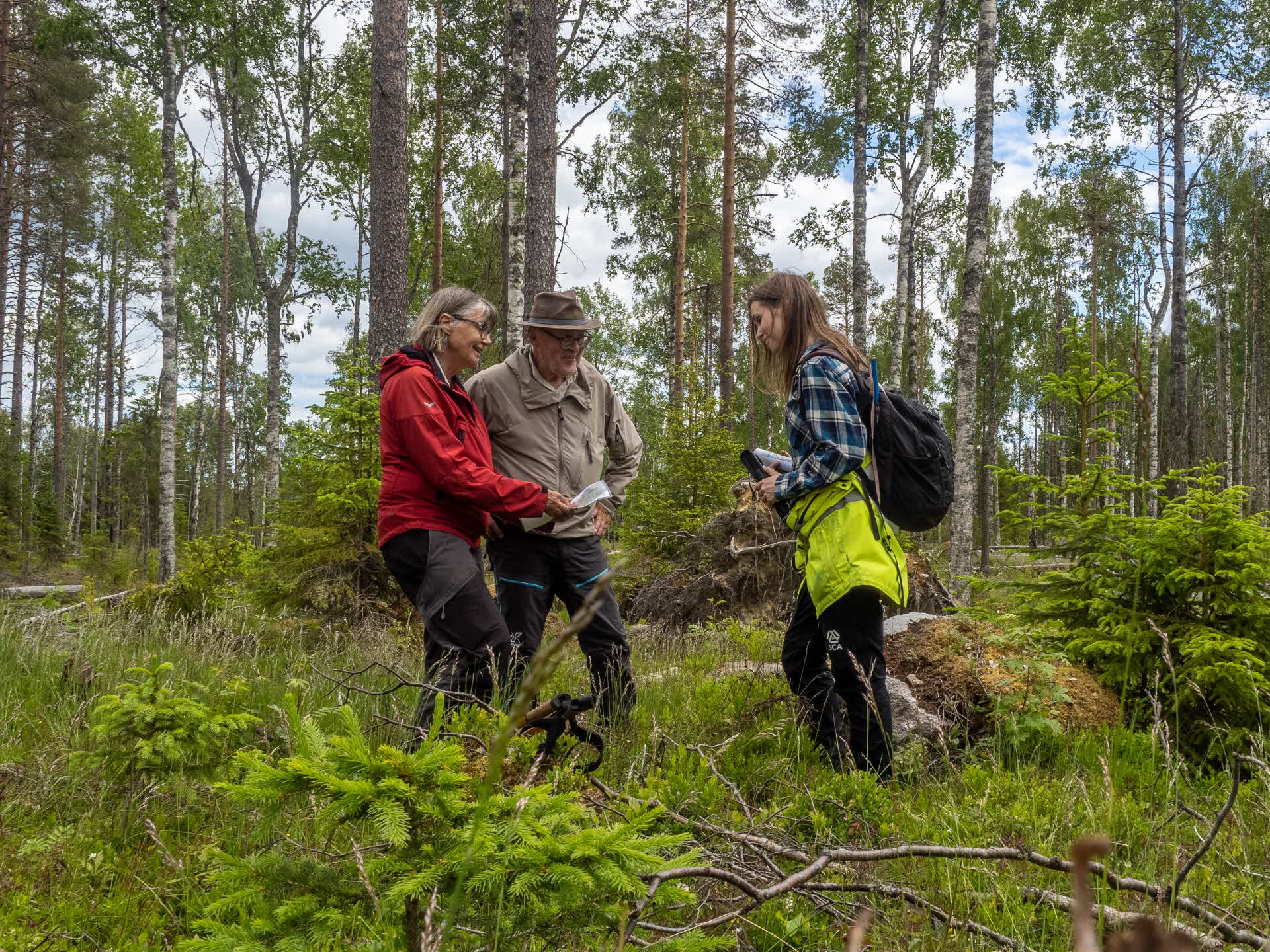SCA and Medelpad’s Botanical Association cooperate
- News
- Forest
- Sustainability
SCA and Medelpad’s Botanical Association have signed a three-year cooperation agreement. The idea is that the association will conduct an inventory of changes to the species composition of vascular plants following the nature conservation harvesting carried out by SCA in western Medelpad.

Nature conservation harvesting was carried out to encourage deciduous forests and promote biodiversity. The area, which is located between Navarn and Holmsjön in western Medelpad, consists of broadleaf-dominated mixed forests, where the trees are on average about 100 years old. The entire area is approximately 55 hectares, of which SCA has conducted measures in 35 hectares and 20 hectares was left untouched.
“We harvested about 35 hectares in an area of broad-leaved succession, but where spruce trees were taking over. A broad-leaved succession is a forest holding that has developed naturally following a forest fire and therefore has a higher proportion of deciduous trees compared with the surrounding coniferous forest,” explains Emelie Westin, nature conservation expert at SCA, and continues:
“This area contains plenty of birch and aspen, and a few sallows. When spruce trees are removed, deciduous trees have an opportunity to grow, and the forest becomes lighter and sunnier, and thick trees will grow here with time. There will also be a natural regeneration of new deciduous trees resulting in a forest containing trees of various ages. The area was ravaged by hurricanes, which means there is a great deal of dead wood here that also benefits biodiversity.”
Important insights
BirdLife Medelpad is conducting an inventory of birdlife in the area on behalf of SCA, to see how the bird fauna changes. The cooperation with Medelpad’s Botanical Association means SCA will also receive good information about flora in the area.
“Our cooperation with Medelpad’s Botanical Association is a great opportunity. Thanks to their knowledge, we can gain important insights into how vegetation changes over time following nature conservation harvesting and can see which species benefit from our measures. The idea is to conduct inventories for a long time to come,” says Emelie.
“The botanical association believes it is positive that we can help increase knowledge about how vegetation changes following this type of harvesting,” says Eva Sundin, Chair of Medelpad’s Botanical Association. We hope the survey can contribute to the development of harvesting methods that promote diversity in our forests in the future and thereby biodiversity.”
Follow species over time
This year’s inventory was conducted during the summer. Botanists created eight different squares, either 1x1 meter or 10x10 meters, in different parts of the area and could then list all of the species present in the squares. In this way, they can follow how the species composition changes over time. They will also calculate coverage in the smaller squares using generally accepted methods, to understand how large an area the vegetation covers and how this changes over the years.
“Initially, we had planned to create seven squares, but we found a tractor rut that had exposed a large amount of mineral-rich topsoil so we added another square there. It will be interesting to see what happens in such a rut. Otherwise, our inventory found that the field layer in the area contains flora such as oak fern, blueberries, bunchgrass, May lily and common and small cow-wheat. We also noted lichen and mosses, which are growing in the bottom layer,” explains Håkan Sundin, Medelpad’s Botanical Association.
Excellent follow up
The botanical association will conduct an annual inventory of the squares for another few years.
“We will then assess and decide how often it is reasonable to check the squares.
Time will tell how long the survey yields results,” says Eva and adds:
“We cannot claim that we have found anything unexpected yet. This is not a rich area containing particularly valuable flora, and the vegetation is the kind you would expect to find. The unexpected may be found in future results.”
“We are very much looking forward to monitoring the development of flora in this area. We are not always good at following up our measures but the cooperation with Birdlife and the botanists will provide us with excellent follow-up of this area,” says Emelie.